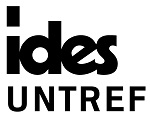LA RELACIÓN ENTRE INFLACIÓN Y CRECIMIENTO
ESTIMACIÓN DEL UMBRAL DE INFLACIÓN PARA LA ARGENTINA
Palabras clave:
Inflación, Crecimiento económico, No linealidad, Efectos de umbral.Resumen
El objetivo del trabajo es presentar una metodología econométrica para identificar la existencia de efecto umbral en la relación entre inflación y crecimiento de Argentina, usando procedimientos econométricos no lineales para la estimación e inferencia. Los resultados empíricos muestran que la inflación contribuye negativamente al crecimiento económico para niveles de inflación superiores al 12,9% anual. Asimismo la inflación no tiene efectos estadísticamente relevantes sobre el crecimiento para niveles de inflación entre 7,5% y 12,9%. La relación negativa y estadísticamente relevante entre inflación y crecimiento es robusta al método econométrico considerado, la exclusión de observaciones atípicas y a las especificaciones alternativas.
Descargas
Citas
AYDIN, C., ESEN, Ö. y BAYRAK, M. (2016). “Inflation and Economic Growth: A Dynamic Panel Threshold Analysis for Turkish Republics in Transition Process”, Procedia - Social and Behavioral Sciences, N° 229, pp. 196-205.
BENIGNO, P. y RICCI, L. (2011). “The Inflation-Output Trade- Off with Downward Wage Rigidities”, American Economic Review, vol. 101, Nº 4, junio, pp. 1436-1466.
BRIAULT, C. (1995). “The Costs of Inflation”, Monetary Assessment and Strategy Division, Bank of England Quarterly Bulletin, Nº 35, febrero.
CAI, J. (1994). “A Markov Model of Switching-Regime ARCH”, Journal of Business & Economic Statistics, vol. 12, Nº 3, pp. 309-316.
CASELLI, F., ESQUIVEL, G. y LEFORT, F. (1996). “Reopening the Convergence Debate: A new Look at Cross-Country Growth Empirics”, Journal of Eco- nomic Growth, vol. 1, Nº 3, pp. 363-389.
CHATTERJEE, S., HANDCOCK, M. S. y SIMONOFF, J. S. (1995). A Casebook for a First Course in Statistics and Data Analysis. Nueva York: Wiley.
DIEBOLD, F. X. y RUDEBUSCH, G. D. (1996). “Measuring Business Cycles: a Modern Perspective”, The Review of Economic and Statistics, vol. 78, Nº 1, pp. 67-77.
DURLAND, J. M. y MCCURDY, T. H. (1994). “Duration-dependent Transitions in a Markov Model of U.S. GNP growth”, Journal of Business and Economic Statistics, vol. 12, Nº 3, julio, pp. 279-288.
ESPINOZA, R., HYGINUS, L. y ANANTHAKRISHNAN, P. (2010). “Estimating the Inflation-Growth Nexus−A Smooth Transition Model”, IMF Working Paper, WP/10/76.
FANELLI, J. M. y FRENKEL, R. (1995). “Micro-macro interaction in economic development”, UNctAd Review, Nº 1, pp. 129-154.
FILARDO, A. J. (1994). “Business-cycle Phases and Their Transitional Dynamic”, Journal of Business and Economic Statistics, vol. 12, pp. 299-308.
FRANCQ, C. y ROUSSIGNOL, M. (1997). “On white Noises Driven by Hidden Markov Chains”, Journal of the Time Series Analysis, vol. 18, Nº 6, pp. 553-578.
GOLDFELD, S. M. y QUANDT, R. E. (1972). Non-linear Methods in Econometrics. Amsterdam: North-Holland Publ. Co.
GOODWIN, T. H. (1993). “Business-cycle analysis with a Markov-switching-model”, Journal of Business and Economic Statistics, vol. 11, Nº 3, pp. 331-339.
HAMILTON, J. D. (1989). “A new Approach to the Economic Analysis of Nonstationary Time Series and the Business Cycle”, Econometrica, vol. 57, Nº 2, pp. 357-384.
HANSEN, B. (1999). “Threshold effects in nondynamic panels: estimation, testing and inference”, Journal of Econometrics, vol. 93, pp. 345-368.
——— (2000). “Sample Splitting and Threshold Estimation”, Econometrica, vol. 68, Nº 3, pp. 575-603.
IBARRA, R. y TRUPKIN, D. (2016). “Reexamining the relationship between inflation and growth: Do institutions matter in developing countries?”, Economic Modelling, vol. 52, Part B, pp. 332-351.
KERMER, S., BICK, A. y DIETER, N. (2013). “Inflation and Growth; new evidence from a dynamic panel threshold analysis”, Empirical Economics, vol. 44, Nº 2, pp. 861-878.
KHAN, M. S. y SENHADJI, A. S. (2001). “Threshold effects in the relationship between inflation and growth”, IMF Staff Papers, vol. 48, Nº 1.
MAIA, J. L. y KWEITEL, M. (2006). “Relación inflación-crecimiento: estimación de umbral para la Argentina”, Dirección Nacional de Programación Macroeconómica, Ministerio de Economía y Finanzas Públicas.
LI, M. (2006). “Inflation and economic growth: thresholds effects and transmission mechanisms”. Edmonton: Department of Economics, University of Alberta.
MORTAZA, G. y AHMED, S. (2005). “Inflation and economic growth in Bangladesh: 1981-2005”, Bangladesh Bank Working Paper Series, WP 0604.
MUBARIK, Y. A. (2005). “Inflation and Growth: an estimate of the threshold level of inflation in Pakistan”, State Bank of Pakistan, Research Bulletin, vol. 1, Nº 1, pp, 35-44.
NDORICIMPA, A. (2017). “Threshold Effects of Inflation on Economic Growth in Africa: Evidence from a Dynamic Panel Threshold Regression Approach”, African Development Bank Group, Working Paper Nº 249, enero.
NEWEY, W. K. y WEST, K. D. (1987). “A Simple, Positive Semi-Definite, Heteroskedasticity and Autocorrela- tion Consistent Covariance Matrix”. Econometrica, vol. 55, Nº 3, pp. 703-708.
PESARAN, M. H. y POTTER, S. M. (1997). “A Floor and Ceiling Model of US output”, Journal of Economic Dynamic and Control, vol. 21, Nos 4-5, pp. 661-695.
POLLIN R. y ZHU, A. (2005). “Inflation and economic growth: a cross country non linear analysis”. Amherst: Political Economy Research Institute, University of Massachusetts.
QUANDT, R. E. (1958). “The Estimation of Parameters of Linear Regresion System Obeying Two Separate Regimes”, Journal of the American Statistical Association, Nº 55, pp. 873-880.
SAREL, M. (1995). “Non linear effects of inflation on economic growth”, IMF Working Paper, WP/95/56.
SHILLER, R. (1996). “Why do people dislike inflation”, NBEr Working Paper, 5539.
SICHEL, D. (1994). “Inventories and the three Phases of the Business Cycle”, Journal of Business y Economic Statistis, vol. 12, Nº 3, pp. 269-277.
SIDRAUSKI, M. (1967). “Rational choice and patterns of growth in a monetary economy”, American Economy Review, vol. 57, Nº 2, pp. 534-544.
SIMONOFF, J. (1996). Smoothing methods in statistics. Nueva York: Springer-Verlag.
STOCKMAN, A. C. (1981). “Anticipated inflation and the capital stock in a cash-in-advance economy”, Journal of Monetary Economics, vol. 8, Nº 3, pp. 387-393.
SWEIDAN, O. D. (2004). “Does inflation harm economic growth in jordan? An econometric analysis for period 1970-2000”, International Journal of Applied Econometrics and Quantitative Studies, vols. 1-2, pp. 41-66.
TIAO, G. C. y TSAY, R. S. (1994). “Some Advances in non-linear and Adaptive Modelling in Time-series”, Journal of Forecasting, vol. 13, Nº 2, pp. 109-131.
TOBIN, J. (1965). “Money and economic growth”, Econometrica, vol. 33, Nº 4, pp. 671-684.
TONG, H. y LIM, K. S. (1980). “Threshold Autoregression, Limited Cycles and Cyclical Data”, Journal of the Royal Statistical Society, Series B, Nº 42, pp. 245-292.
VÁSQUEZ CORDANO, A. L. (2003). “Umbrales de inflación y crecimiento económico en el Perú: predicción e inferencia en un contexto de estabilidad macroeconómica, 1992-2002”, Banco Central de Reserva del Perú, Concurso de Investigación para Jóvenes Economistas 2002-2003.
Descargas
Publicado
Cómo citar
Número
Sección
Licencia

Esta obra está bajo una licencia internacional Creative Commons Atribución-NoComercial-CompartirIgual 4.0.
La aceptación del manuscrito por parte de la revista implica la no presentación simultánea a otras revistas u órganos editoriales y la cesión no exclusiva de los derechos patrimoniales de los autores en favor del editor, quien permite la reutilización, luego de su edición (postprint), bajo licencia Creative Commons 4.0. Atribución-NoComercial-CompartirIgual (http://creativecommons.org/licenses/by-nc-sa/4.0/deed.es). Se puede compartir, copiar, distribuir, alterar, transformar, generar una obra derivada, ejecutar y comunicar públicamente la obra, siempre que: a) se cite la autoría y la fuente original de su publicación (revista, editorial y URL de la obra); b) no se usen para fines comerciales; c) se mantengan los mismos términos de la licencia.
Se deja constancia que el referido artículo es inédito y que no está en espera de impresión en alguna otra publicación nacional o extranjera.
Por la presente, acepta/n las modificaciones que sean necesarias, sugeridas en la revisión por los pares (referato), para adaptar el trabajo al estilo y modalidad de publicación de la Revista.










